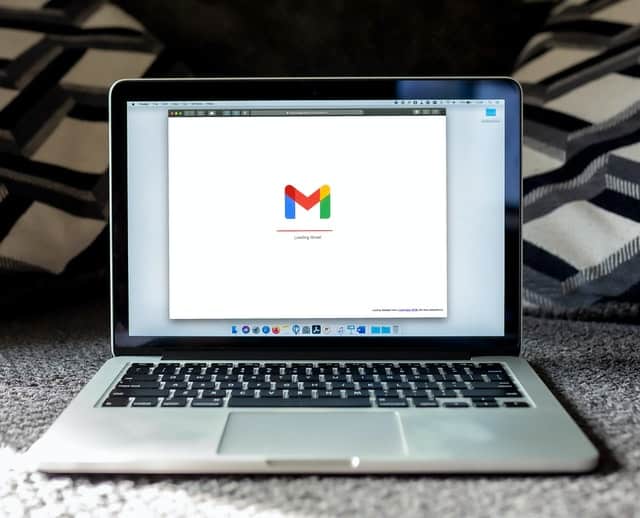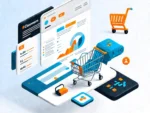Whether you are a solopreneur or run a marketing department in a large company, you’ll quickly find that customers love email. While this may surprise you, especially if you get a lot of marketing emails that just go into the trash, email marketing has consistently proven itself to be highly effective. If this is true, whether you primarily send out an email marketing newsletter or you prefer to advertise sales. For many companies, a mixture of email marketing types is highly effective.
This paradox of customers not liking intrusions, but loving email marketing, is something that has puzzled marketers for years. However, whatever the reason for customers’ affinity towards emails, it is critical that you learn how to leverage them for maximum effect. Let’s look at some email marketing best practices and some examples of how it is used effectively.
What is Email Newsletter Marketing?

Email newsletter marketing is a part of your overall email marketing strategy where you leverage the power of newsletters. However, there are many ways to benefit. That’s because email newsletters can have a variety of information that counts as corporate news. For example, one newsletter may announce key personnel changes, while another might reveal and discuss the newest exciting product.
What all of these have in common is the fact that you are sharing some form of corporate news. This means, for example, that you won’t talk about special promotions, apart from new product releases. Rather, a newsletter has information of more general interest to people who engage with your company. In turn, say help solidify the relationship between your brand and its followers.
Why is Email Newsletter Marketing Important for Businesses?
Newsletters are a dependable marketing channel for businesses. while most of us first think about newsletters in the context of nonprofit organizations, they are just as effective for large corporations. After all, people love to hear what your business is doing in the community.
not only do people enjoy reading newsletters, but they are cheap, effective, and easy to implement. In terms of implementation, all you really need is someone with good writing and editing skills. You’ll also want somebody who can make a nice layout and create appropriate graphics if you don’t already have them. Best of all, newsletters are very good at driving sales. For nonprofits, they are great sources of contributions.
Email Marketing Statistics

Here’s the thing: email is hugely popular worldwide. In fact, over 4 billion people use email on a daily basis. In addition, 64% of businesses use email marketing to reach customers. While it may be easy to dismiss these efforts as a desperate move to increase revenue, some 31% of B2B marketers say email newsletters are the best way to nurture leads. We have seen even better results for B2C brands.
For this reason, it is probably unsurprising that the average email open rate is 19.8%, the click-through rate is 11.3%, and the bounce rate is 9.4%. In a nutshell, this means that your brand’s email marketing newsletter has a good chance of being opened. Therefore, you have a high chance of making good impressions with your customers.
Further Reading: The Top 38 Compelling Email Marketing Statistics for 2025
11 Email Newsletter Best Practices for Creating Effective Email Newsletters (with Examples)
Clearly, there are many benefits to creating and distributing an email marketing newsletter. However, as they say wisely, not all newsletters are created equal. in fact, there are many best practices you can follow which will help increase the chances of success. And when you are successful, you might even get a better return on investment. Like so many other things in marketing, these newsletters are part art and part science. Let’s dive into the best ways to make your email newsletters great.
1. Set Subscriber Expectations When Users Subscribe

Inform subscribers as to the kind of content and the frequency of your newsletter. you don’t like spam or inbox bombardment, and neither does anyone else. Also, as a rule, newsletters are less frequent than sale announcements, especially for B to C brands. remember, very few people have enough time to read every email they receive. Therefore, you want people to know that you value their time.
just something else to consider: people prefer to know what they are signing up for. This means that if you communicate expectations up front, people may be more likely to sign up. Therefore, these expectations up front will ultimately help you grow your subscriber base.
2. Create a Compelling Subject Line

Let’s face it: the subject line is the most important element of your newsletter. If you get this wrong, all your efforts will be in vain because few people will read the newsletter. To create a successful subject line, choose something short and catchy. What this means is that your email marketing newsletter subject line should be around 30 to 50 characters.
Similarly, you should think about the contents of your subject line. This means you should always strike a balance between compelling copy, offering value to the customer, and making it interesting. At the end of the day, the purpose of a subject line is to convince a reader to open the newsletter. As you write, ask yourself whether or not the potential copy would earn a piece of your valuable time.
3. Send a Healthy Mix of Educational and Promotional Content
Newsletters are not just about promoting and selling your products. there are several other email types that can offer promotions without the text-heavy format. Therefore, in addition to product announcements and corporate milestones, you should also include some useful educational content. For instance, a company that sells gourmet food might include a recipe.
Further Reading: Mass Email Marketing: Top 10 Free Tools and Best Practices for Bulk Emailing
4. Keep the Body Copy Short

Try not to cram entire articles and blog posts into your newsletter. Readers are busy, and if you are very text-heavy they might not get to the end of your newsletter. This could result in their missing it’s the most important article for them. Instead, the idea is to give out just enough information to peak people’s interest. Then, they should click through to your website if they want to read the entire story.
One kind of company I see using this technique very effectively is news organizations. Typically, the goal of news organizations’ newsletters is to get people to read their stories in full. Therefore, they will include a synopsis of the article or maybe its first paragraph. Then, to read the whole thing, you must visit their website. Often, the majority of their content is behind a paywall. However, email marketing newsletter subscribers sometimes get a limited number of free articles.
Further Reading: How to Create the Perfect Content for Your Email Marketing
5. Focus on Your Email Newsletter Design

If you hate reading material that is one monolithic block of text after another, you are not alone. In fact, a lot of people are turned off by web copy they consider boring. This is why you must always have a good outline for your newsletter and its contents. In addition, try to include a few relevant pictures or graphics. Including only your company logo is unlikely to be enough.
Overwhelmed by Digital Marketing?
Just released: my new book to help small businesses, entrepreneurs, and marketers master digital marketing in today’s digital-first world.
Drawing on my Fractional CMO experience, Digital Threads simplifies complex strategies into clear, actionable steps for success.
Transform your business today—grab your copy! Click the cover or button below to buy on Amazon.
On the other hand, a high-quality newsletter design often enhances readability. In particular, it offers busy readers the opportunity to skim the newsletter and only follow up on items they consider to be valuable. Not only does this increase your website visits, but it’s easy to see how it makes relevant content easier to find and reduces the number of unsubscribes.
Further Reading: Email Marketing Design: 13 Best Practices to Follow
6. Strategically Place CTAs in a Well-Designed Newsletter

Little things like fonts, alt text, images matter, and white space matter. Adding videos is also a good idea. These features help to draw your audience into your content and make them want to read more. After all, people tend to be more interested in a topic when they find it engaging. At the same time, you’ll show that your brand doesn’t take itself too seriously. Little bits of humor can be highly effective.
with that said, you can’t rely on engaging features to bring your audience all the way to the bottom of the page without including a call to action. These CTA’s can be something simple, such as “read more here,” or even “check out our products today.” On the other hand, sometimes a CTA is more complicated, such as asking potential customers to fill out a lead capture form.
Here’s an example: Campaign Monitor puts out an email newsletter where they feature different aspects of their brand. These can include tips and tricks, an example of client success, or other valuable insights. However, they only include a preview of each post. Then, they include a button with a link to the full article on their website. These buttons serve as a call to action in addition to an opportunity for Campaign Monitor to capture more traffic.
Further Reading: SMS and Email Marketing: Leveraging Both for Maximum Impact
7. Optimize for Both Mobile and Desktop

More than half of emails that are sent out are read on mobile devices. This is true, whether the emails are personal, business, or commercial. After all, a lot of people first read their email first thing in the morning. Chances are that they won’t boot up their computer right away, especially if they’re professionals who have a commute. Besides this, using your computer for everything is no longer convenient in our modern world.
Make sure your newsletter design and the subject line are compatible and responsive both on desktop and mobile. otherwise, there is a high chance that a large subset of your readers will skip your email. this can happen whether the email performs poorly on a desktop, or on a mobile device. Since people can’t possibly read every email they receive, the ones that are easier will get read more often.
Unfortunately, it’s relatively easy to optimize for both device types. A good quality email client, such as Constant Contact or Campaign Monitor will let you preview an email before it’s sent. In addition, many of them offer pre-optimized templates to use. When you use a template, make sure that you make the overall email original. You don’t want your email marketing newsletter to look like a cookie-cutter document. Fortunately, with the right email marketing tools, you can make any email copy shine.
8. Segment Your Users Based to Send Relevant and Personalized Content that Resonates
Not every news update or promotion is meant for every customer. After all, a single woman without a partner probably does not care about your promotion for men’s suits. About the only time, she might be interested in menswear would be as a gift for someone special, like a parent or sibling. for this reason, if you send her an email marketing newsletter that only talks about menswear, there’s a high chance that she will, unsubscribe entirely.
Unfortunately, a lot of businesses make the mistake of not segmenting their audience. Typically, it is much more effective to market particular goods and services to the market segment most interested in them. Alternatively, some segments may resonate with one pitch better than another. In both of these situations, you can increase sales yield and ROI by appealing to each segment individually.
In other words, most businesses will find that a better approach is to segment their audience based on different demographics. for instance, You can send one email marketing newsletter version to current customers, while sending a different one to subscribers who are earlier or later on in their buyer journey. Also, you can tailor your newsletter variations towards the needs of each segment, as you would with the apparel company above. In some cases, you can even leverage location as an identifier.
Generally speaking, you will achieve more success with a segmented campaign than you will with a monolithic one.
9. Track Your Email Marketing Newsletter Campaigns and Perform A/B Tests
There isn’t a definite way to know what will work with your audience. While past experience can help you predict the future, market conditions and other factors can help erode your certainty over time. In addition, some things that were funny a year ago may be politically incorrect now, and vice versa.
That’s why it’s a good idea to do a lot of A/B testing. Using A/B testing helps you read the customers’ moods over time. For instance, you might do a test on two ads including a formerly successful one, and find that the newcomer should perform better. Part of the beauty of A/B testing is that it not only helps you plan an email campaign better in the first place but also helps to enable mid-campaign adjustments.
In addition, testing helps you gain valuable data that can be used to adjust your marketing strategy. This way, you can maintain a strong strategy and maximize value over the long term. At the same time, it will help maximize your ROI using an email marketing newsletter.
Further Reading: How to Create a Strong Nonprofit Email Marketing Strategy
10. Have a Consistent Newsletter Schedule

Having a schedule helps you plan ahead and keep track of your progress. For example, you might consider a monthly letter to be part of your overall campaign for that month. In addition, if you publish the email marketing newsletter on the same day of the month, you can have a set production schedule for the articles that go with it.
Besides the convenience for you, well next sentence has shown that customers prefer engagement with their favorite brands at regular intervals. This is true with social media marketing, but it’s also important for email. Quinn and people look forward to receiving your content at regular intervals, it strengthens the bond between your brand and its customers. Over time, the expectation of emails helps ensure that your emails are opened more often.
With that said, it’s never a good idea to bombard your customers. Many Marin did emails get deleted, and subscriptions canceled because the user receives too many emails. therefore, a good for your email marketing newsletter is likely between one a week and one a month. It free emails you can not only bombard your customers, but they also mean your customers won’t anticipate those emails as much. Then, your newsletters and branded message will fade into their background.
Further Reading: When is the Best Time to Send Marketing Emails? (with pre-send checklist)
11. Include a CTA and Make It Compelling
Businesses tend to forget to include a CTA. And that may defeat the purpose of sending newsletters. Your goal is to inspire your subscriber to take some kind of action. It could be visiting your site or checking out your special offer. That wouldn’t be possible without a CTA that stands out and compels the reader to click.
However, your CTA should never feel spammy. Especially with B2B customers, you must make readers feel like you value their time and are offering something valuable in return for it. This is one reason why using a newsletter to publicize the latest white paper or case study can be a good idea. A lot of busy professionals don’t have time to chase down that sort of material. However, if they are offered the opportunity to read it there’s a good chance they’ll bite.
Conclusion
Composing, designing, and distributing a newsletter can be time-consuming. In addition, you want to ensure that the time you spend writing and designing your newsletter pays off. Fortunately, by following these best practices, you can create an email marketing newsletter that people love to receive. Ultimately, your success can be limited only by your creativity end ability to reach customers.
Hero Photo by Brett Jordan on Unsplash










